 |
Picks is a monthly sampling of Japan's art scene, offering commentary by a variety of reviewers about exhibitions at museums and galleries in recent weeks, with an emphasis on contemporary art by young artists. |
 |
 |
|
|
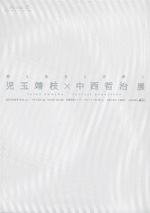 |
 |
 |
 |
| Yasue Kodama x Tetsuji Nakanishi: Yurameki Tokeyuku (Flicker and Melt) |
| 16 June - 13 July 2012 |
Kyoto Art Center
(Kyoto) |
 |
| In this fourth installment of Kyoto Art Center's New Incubation series, veteran artist Kodama is paired with newcomer Nakanishi, who graduated from Kyoto City University of Arts last year. Whereas Kodama's paintings exude a powerful presence from a state of tranquil quietude, Nakanishi's stand out for their bold strokes, vivid colors and thick textures. Two contrasting approaches to painting, but both artists share a determination to extract a spirit that flickers in some deep place. |
|
 |
|

|
 |
 |
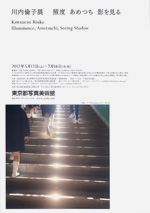 |
|
Kawauchi Rinko: Illuminance, Ametsuchi, Seeing Shadow |
| 12 May - 16 July 2012 |
Tokyo Metropolitan Museum of Photography
(Tokyo) |
 |
| This full-scale exhibition of Kawauchi's photography, her first such show in Tokyo, introduces both past and present work in several sections. "Illuminance" revisits her past, as summarized from previous series like "Utatane," "Cui Cui," and "AILA." Though it is a brilliantly edited and installed retrospective, one's interest naturally gravitates to her latest work, exemplified by the "Ametsuchi" and "Seeing Shadow" series. "Ametsuchi" literally means Heaven and Earth, and indeed, Kawauchi focuses her large-format camera unswervingly on the boundary between the two, capturing images that evoke a primordial world of myths and spirits. |
|
|
 |
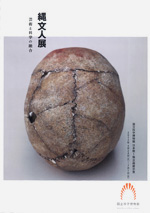 |
|
Jomonese |
|
|
National Museum of Nature and Science, Tokyo
(Tokyo) |
 |
| Nominally a photo exhibition but more of an archeological presentation, "Jomonese" is about the people of the Jomon period, an era that began around 15,000 years ago and lasted for over 10,000 years. Increasingly viewed by scholars and the public as the oldest culture that might be termed Japanese, the Jomon is enjoying a bit of a boom these days. The centerpieces of this show are the remains of Wakaumi Shellmound Man, whose skeleton was found in Ibaraki Prefecture northeast of Tokyo, and of Usu-Moshiri Woman, who was unearthed in Hokkaido. |
|
|
|
|
|
|
|

|
 |
 |
|
|
|
|
|
 |
 |
 |
|
|
Hiromi Tsuchida: Berlin
|
|
9 - 22 May 2012
|
Ginza Nikon Salon
(Tokyo) |
 |
| This series is typical of veteran photographer Tsuchida's work in its overt highlighting of dichotomies. He shot these scenes of Berlin over three periods: 1983, 1999-2000, and 2009; using both monochrome and color, he mixes snapshots of architectural structures with those of people on the streets. These disparate motifs and approaches seem to be shuffled together at random, producing an exhibition that gives an impression of disorganization, but also seems an honest reflection of Tsuchida's current worldview. The series is by no means complete, and the fact that there are no clues as to what future permutations Tsuchida will indulge in depicting Berlin, or any other city, make the evolution of his work all the more intriguing. |
|
|
|
|
|
|
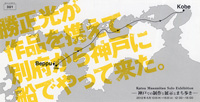 |
 |
|
|
Masamitsu Katsu Solo Exhibition
|
|
10 - 15 May 2012
|
Gallery 301
(Hyogo) |
 |
| Curated by Kobe University's Minami Hashimoto, this solo show of works by an artist based in Beppu, Kyushu -- at the other end of the Seto Inland Sea from Kobe -- was subtitled "Masamitsu Katsu came to Kobe from Beppu by boat." The gallery was filled with Katsu's works in pencil -- his medium of choice -- including many drawn during a recent period of residence in Kobe. Close scrutiny of each work reveals an artist of acute sensibilities and powers of observation. |
|
 |
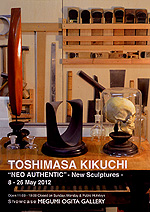 |
 |
|
| Toshimasa Kikuchi: Neo Authentic |
| 8 - 26 May 2012 |
Megumi Ogita Gallery
(Tokyo) |
 |
| Kikuchi sculpts archetypal, organic forms in wood, ranging from a skull to a ship's hull, as well as precisely carved mathematical models of geometric figures in three dimensions, somewhat reminiscent of Hiroshi Sugimoto's work with such motifs. The artist, a graduate of the Conservation Course Sculpture Laboratory at Tokyo University of the Arts, currently works at the University Museum of the University of Tokyo, in whose collection he says he found the motifs for this series. The intricacy of his technique, further augmented by his curatorial bent, is nothing short of sublime. It is all the more impressive that Kikuchi channels his protean interests through the very basic medium of wood. |
|
|
|
|
 |
|
|
 |
|